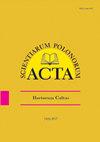大豆多效唑依赖性耐盐性与clc1和nhx1基因表达有关
IF 0.7
4区 农林科学
Q4 HORTICULTURE
引用次数: 1
摘要
多效唑(PBZ)通过两种方式增强植物对盐胁迫的抗性:直接清除活性氧;以及通过提高抗氧化酶活性、光合效率和代谢产物含量,以及通过调节与应激相关的转录因子来间接提高。然而,PBZ在大豆盐胁迫下的调节作用仍未得到很好的解释,需要进一步研究。为此,在土壤试验中研究了盐度(250mM NaCl)和三种不同剂量的PBZ(5、10和20ppm)对大豆(Glycine max L.)叶片生理、生化和分子性状的组合效应。此外,还研究了生理参数(相对生长速率、相对含水量)、叶绿素、丙二醛(MDA)、过氧化氢(H2O2)含量以及酶抗氧化剂(SOD、POX、APX、CAT和GST)、离子含量(Na、Cl)和大豆Na+/H+反转运蛋白GmNHX1和氯离子通道GmCLC1基因的表达。结果表明,PBZ减少了盐诱导的损伤,增加了生物量产量、水分状况和叶绿素。此外,PBZ调节酶促抗氧化剂,减轻盐度下的氧化损伤。在本研究中,首次确定PBZ增加了大豆中GmNHX1(ABA依赖或非依赖)和GmCLC1(ABA非依赖)基因的表达,并降低了盐度下的Na和Cl浓度。总之,PBZ主要通过调节大豆叶片的离子平衡,在盐胁迫反应中发挥调节和刺激作用。本文章由计算机程序翻译,如有差异,请以英文原文为准。
PACLOBUTRAZOL DEPENDENT SALT TOLERANCE IS RELATED TO CLC1 AND NHX1 GENE EXPRESSION IN SOYBEAN PLANTS
Paclobutrazol (PBZ) enhances plant resistance to salt stress in two ways: directly, by straight clearance of reactive oxygen species; and indirectly by enhancing antioxidant enzyme activity, photosynthetic efficiency, and metabolite content, and by regulating transcription factors associated with stress. However, the regulatory effects of PBZ under salt stress in soybean are still not well explained and need further investigation. With this aim, the combination effect of salinity (250 mM NaCl) and three different doses of PBZ (5, 10 and 20 ppm) on physiological, biochemical and molecular traits of soybean (Glycine max L.) leaves were studied in soil experiments. Furthermore, physiological parameters (relative growth rate, relative water content), chlorophyll, malondialdehyde (MDA), hydrogen peroxide (H2O2) content and as well as enzymatic antioxidants (SOD, POX, APX, CAT and GST), ion content (Na, Cl) and soybean Na+/H+ antiporter GmNHX1 and chloride channel GmCLC1 gene expressions were investigated. The results showed that PBZ caused a reduction in salt-induced damages and an increase in biomass yield, water status, and chlorophyll. Moreover, PBZ regulated enzymatic antioxidants and alleviated the oxidative damages under salinity. In this study, for a first time it was determined that PBZ increased both GmNHX1 (ABA dependent or independent) and GmCLC1 (ABA independent) gene expressions and reduced Na and Cl concentrations in soybean under salinity. In conclusion, PBZ plays a role as a regulator and stimulant in salt stress response by mostly regulating ion balance in soybean leaves.
求助全文
通过发布文献求助,成功后即可免费获取论文全文。
去求助
来源期刊
CiteScore
1.30
自引率
14.30%
发文量
61
审稿时长
4-8 weeks
期刊介绍:
In Acta Scientiarum Polonorum Hortorum Cultus we publish original research papers and review articles containing new and significant information on broad aspects of horticulture and related disciplines. The papers are published in English only, in six issues yearly.

 求助内容:
求助内容: 应助结果提醒方式:
应助结果提醒方式:


